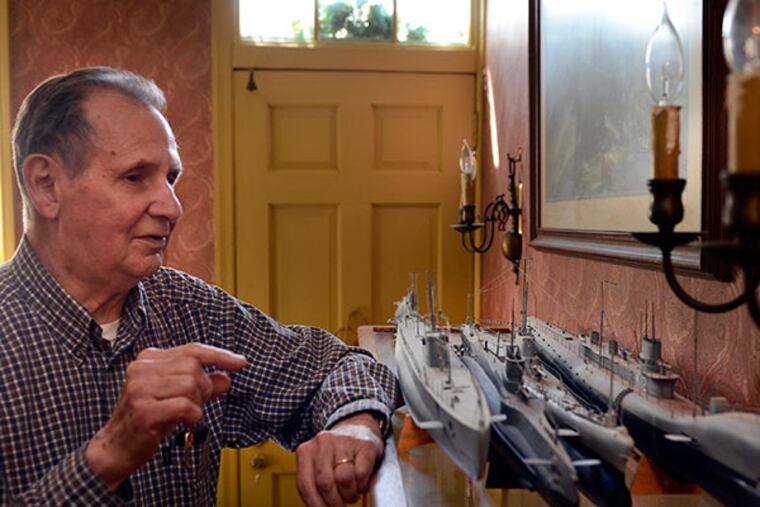Following his long love of building model ships
Edwin B. Leaf tells seafaring tales in three dimensions. He's built more than 150 exquisitely detailed, historically accurate model ships - to scale, by hand - and has authored a book (Ship Modeling From Scratch) about how to do it.

Edwin B. Leaf tells seafaring tales in three dimensions.
He's built more than 150 exquisitely detailed, historically accurate model ships - to scale, by hand - and has authored a book (Ship Modeling From Scratch) about how to do it.
Not that technique is everything, mind you.
"You don't build a model because it's a model. There has to be a story to the ship," says the retired Army lieutenant colonel, his manner congenial yet authoritative.
The stories flow effortlessly: The iterations of the Battleship New Jersey; the sheer beauty of a "revenue cutter" called the HMS Speedy; and the Mikasa, a Japanese national symbol spared by U.S. bomber pilots during World War II.
"If there isn't a story," Leaf says, "a model is just an object."
The craft he's pursued for nearly 70 years isn't just a hobby, either.
"To me, the word hobby means something relatively trivial that you dabble in," Leaf says. "An avocation is something you're dedicated to. I consider this my avocation."
The Pittsburgh-area native built his first ship model, a Baltimore clipper, at 15, in 1945. At 83, he's still at it.
"I just started framing out a little armed sloop from the time of the French and Indian War," says the self-taught ship modeler.
We're admiring the eclectic armada of models displayed throughout the charming 19th-century Edgewater Park home he shares with Pat, his wife of 58 years.
The couple met in France, one of the places across the globe (including wartime Vietnam) where he was stationed during his 33-year Army career. They have three grown children, two grandsons and two great-granddaughters.
"He paints, he sculpts, he plays several musical instruments," says Pat, who has worked as a translator, a therapist and a restaurateur - and has been known to build the occasional ship model herself.
"Ed can do anything," she says.
Eleven of her husband's ships will be exhibited beginning May 15 at Philadelphia International Airport, part of a show by members of the Philadelphia Ship Model Society. The ships will be displayed through Nov. 15 beyond security between Terminals C and D.
"His work is stunning," says Leah Douglas, the airport's director of exhibitions. "The first time I saw it, I was awestruck."
Building model ships - particularly from scratch - "is a dying art," notes John Christinzio, the society's past president.
"His work is incredible," says Christinzio, 53, of Philadelphia.
While most members stick to particular eras or types of ship ("I'm a steel hull guy," he notes), Leaf's fleet ranges far and wide.
Warships of many flags (American, British, French, Italian), merchant vessels, submarines, a Phoenician sailing/rowing ship and a Gloucester, Mass., water boat Leaf calls a "funny little fellow" have emerged from his workshop.
Some of his models are in private collections, or have been exhibited in public, including at the Battleship New Jersey and Mystic Seaport, Conn.
Work of this caliber requires patience and exactitude, along with steady hands. Intensive research is followed by drawings (Leaf does his own), and then a months-long marriage of the best materials with the right tools and techniques.
Masts begin as strips of basswood, which he tapers on a sanding wheel. Rigging is most often strung from thread.
"You buy a roll of copper sheeting and cut it," Leaf says, when I ask how he covered the bottom half of one model hull with tiny individual plates.
It's a work of art, and also, Leaf says, a way to document history.
You're not only documenting, I tell him. You're contributing.
"I hope so," Leaf says.